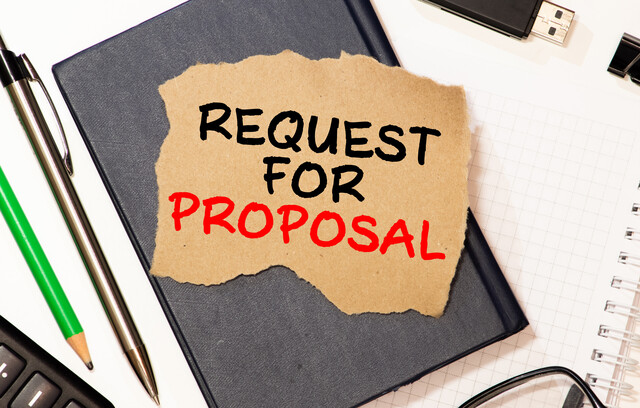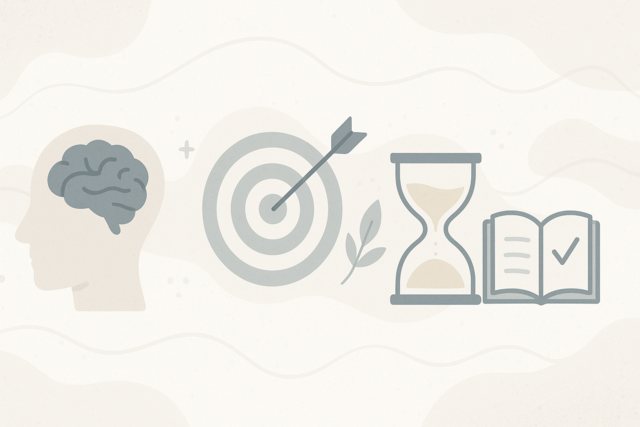Introduction
Do you dread reading because you know it takes you forever just to get through a single page? If so, you're not alone. There are hundreds of people who put off reading a novel or even a business letter because they just don't feel like they can read fast enough.
There are several people that have the same problem as you and this article will help you to not only read faster, but also comprehend everything that you read. You'll also learn how to speed read much more quickly than you ever thought you could.
There are several reasons why we read slowly. The main reason is the way that we were taught to read in the first place. This article will take you through the tools and exercises that you need to increase your reading rate in several ways and will help you reverse the effects of how you were taught to read in school. Plus, you will learn to read faster and remember everything that you have read. You will also learn what you need to read without having to read an entire book to get the main points.
You will not only learn to read quickly, but you will also learn to read smarter. Smart reading will teach you what you need to read and how to do it efficiently. Additionally, you will be able to recall the information you need from everything that you have read.
There are several benefits that you can gain by improving your reading speed. Whether you are a student or in a business position, you can easily benefit from improving your reading and comprehension skills.
Benefits to Speed Reading
There are several benefits to reading faster including:
- Read more in less time. By learning to speed read, you can double or triple the amount that you read in the same amount of time. You may find that you only need to skim material to understand what is being discussed.
- Improve your concentration. By reading faster, you are able to pay more attention to what is being discussed and you are able to better focus on your task at hand.
- Better comprehend what you read with greater depth and accuracy. As you increase your concentration, you'll gain a better understanding of what you are reading.
- Retain the information that you read better and longer. If you can remember the information better because of improved concentration, you will be able to retain that information more efficiently.
- Enjoy reading more because it won't take you as long to read a book anymore. Your reading confidence will increase and you'll find reading more enjoyable.
There are several more benefits to learning to read faster as well. For instance, students who are able to improve their reading tend to see an increase in test scores, especially if you are continuing your education in college or graduate school.
If you've ever felt that you get "information overload" from reading, then learning to speed read can help you in this instance as well. This is because you'll know what to read and you'll learn to pull out the most important points, allowing you to concentrate on only the important information and not become overloaded.
Several other benefits to speed reading include:
- Surfing the Internet more efficiently
- Quickly read how to assemble and operate items that have instructions
- Shop more quickly by scanning and comparing nutrition labels more effectively
- Know how long it really takes you to read something so that you can plan your time wisely
How Speed Reading Can Help Your Career
Each and everyday you probably have a pile of papers that develop on your desk. These may be memos, reports, or files that you need to go through so that you can do your job each day. However, the time it takes you to read can have a huge effect on how efficiently you are able to work.
For instance, if you have to read a large file full of information to create a report or to investigate something for your job, how quickly you can read can have a large impact on how quickly you can do the task at hand. If your business is like most, then they want you to work as fast as possible, so you could most likely benefit from increasing your reading speed.
If you ever find yourself re-reading the same material over and over again at work, you'll also benefit from speed reading. Why? Because you'll learn how to better comprehend what you're reading and you'll retain that information. So, not only will speed reading help you be faster at your job, you won't waste time re-reading information over and over again.
Unlearning Your Style of Reading
When you are taught to read in school, the method that they use is to have you look at each individual word in a sentence. You look at the word, you pronounce it and then you look at the next word. If you are a small child and are just learning how to read, then this is a great way to learn and perfect reading. However, if you're an adult, you shouldn't need to focus on each individual word anymore. In this instance, you are being slowed down by mentally pronouncing each word and only concentrating on each word at a time rather than the sentence as a whole.
Speed reading can help you unlearn this elementary school style of reading, by grouping words together instead of focusing on individual words. Because you already know how to read and you already know what words mean by looking at them, you shouldn't need to focus on each word anymore and can look at a group of words as a whole.
Preview Your Reading
One of the biggest mistakes that readers make is not first previewing the material they are about to read. This is a key step in improving ineffective reading skills and habits. However, simple recognition of this issue will not solve your problem; you have to replace bad habits with good habits.
It is unlikely that you would go on a road trip without first laying out a driving plan or looking up instructions online. Therefore, you shouldn't just jump into reading without first recognizing the depth of the material to be read. However, many people don't think they need to map out their reading and this is why many people read slowly.
Suppose you were given a chapter to read from a biology textbook. After 5 minutes, would you be able to answer the following questions:
1. What is the title of the chapter?
2. What is the author's name?
3. How many pages does the chapter consist of?
4. Are there subheadings in the chapter?
5. Are their study questions at the end?
Previewing the material that you are going to read can provide you with a greater understanding of the material that you are beginning, which will not only help you read faster, but will also assist in improving your reading comprehension.
However, depending on the type of material you are going to read will depend on how you preview it.
Previewing a Nonfiction Book
When previewing a nonfiction book or type of material, you're going to want to follow this process:
- Examine the outside of the material, including the title, illustrations, blurbs, comments, etc.
- Note the name of the author and read their biographical information.
- Check the publisher's name and the copyright date so that you can tell right away how old the information may or may not be.
- Read the introduction, preface, foreword, etc.
- Look over the Table of Contents and note the indexes and glossaries.
- Quickly flip through the book looking at graphics, photos and the layout of the book.
- Read the summary or conclusion.
- Finally, evaluate the purpose of the material considering what you have just previewed.
Previewing a Fiction Book
Because the main reason that anyone reads fiction is to find out the result of a story, you don't want to preview this book and ruin the ending. You are going to preview a fiction book differently than a nonfiction book following this process:
- Read about the author
- Read everything printed on the outside
- Check the publisher and copyright date
- Look over the Table of Contents if there is one
- Read the front matter
- Flip through to see the format of the book as well as whether or not there are any illustrations
Previewing a Report
When working for a corporation or company, you may often find yourself having to read business reports or other prepared reports. If you preview them quickly, then you will be able to understand and comprehend the report much easier, not only be prepared to read it much faster. This method of previewing is similar to previewing nonfiction material, but with a few differences.
- Check the title and ask yourself, "What is the report about?"
- Note the writer or preparer of the report. Note the company, department, etc.
- Read and understand the purpose of the report.
- Study the Table of Contents or equivalent.
- Read the Abstract or Summary carefully and determine what the final conclusions or proposals are (if any).
- Read any front or back matter.
- Thumb through looking at subheadings, organization and typography.
- Read in depth as you need to.
Elimination Visual Regressions, Progressions and Distractions
If you watch a person read, you will notice that the eyes make a series of movements that are short jerks. These pauses generally occur as the reader stops for each word or each set of words, depending on how many words they are able to take in as they read. If you continue watching this person read, you will notice that as they move across the line, they often glance up above the material, glance below the material and perhaps even off to either side. These glances are often totally away from the page. All of these unnecessary movements are referred to as:
- Visual regressions - looking back or above the material
- Visual progressions - looking ahead or below the material
- Visual distractions - looking left and right or completely away from the page
Now, if you watch a trained accelerated reader, you will see their eyes move across the line with a reduced number of eye stops and movements. These readers can generally read straight across the line without stopping more than two or three times. Because reading rate is largely determined by how often the eyes have to stop, it stands to reason that an accelerated reader is able to read much more quickly because they experience fewer regressions, progressions and distractions.
The best way to eliminate a habit of going back and re-reading something you missed the first time is to just stop doing it. If you do miss a minor point, you can always go back after you have finished reading the material to do a quick review. Because you are reading two to three times faster than you ever have before, you should have plenty of time to go back and do a quick review if you need to. To aid in reducing the number of visual regressions you experience try sliding a card down over the page as you read, hiding each sentence as you finish it. Only use the card temporarily and until you break the habit of going back and re-reading, you don't want to use it as a crutch.
People who experience visual progressions tend to keep looking at the bottom of the page, either to check the page number or to see how much more is left to read. They often allow patterns of letters to stand out to them and they find themselves looking down to see what is down the page. These individuals also tend to flip forward in the book to see how much more is left to read. This process only costs you time and makes you lose your concentration. When you read with excessive visual progressions, you tend to forget what you just read, thereby resulting in a decreased level of comprehension. The best way to overcome this habit is to keep your eyes focused on what you are reading and not what is coming up. If you properly preview ahead of time, you shouldn't need to waste time flipping forward or looking forward.
Finally, the last area that causes people to read slowly is visual distractions. These distractions are when you completely stop reading and look off the page or to the left or right of the page with no reason. Generally, if you're able to minimize regressions and progressions, then you're likely to eliminate a lot of your distractions as well. Additionally, you can limit distractions by not reading in a distracting area. Designate a reading place that allows you to read comfortably and away from distracting activity.
Whenever you're reading, if you feel as though you're tired or not comprehending what you should be, then you should take a break. When you take a break, get away physically and mentally from what you're reading and then return when you're ready to concentrate and focus again.
By eliminating regressions, progressions and distractions, you will find that you can take your reading from a nice jog to a brisk run, as you will be more efficient in your reading style.























